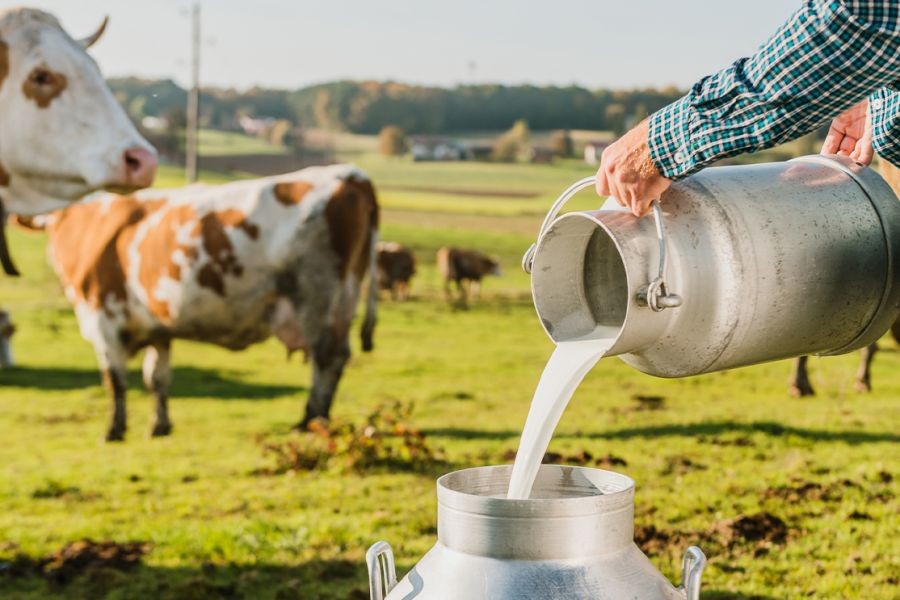New Zealand’s dairy industry has long been a cornerstone of its economy, but its influence extends beyond mere numbers on a balance sheet. The story of the dairy sector is one of adaptation, innovation, and economic resilience. As the world grapples with sustainability challenges, understanding the evolution of New Zealand’s dairy industry offers valuable insights into balancing economic growth with environmental responsibility.
Historical Evolution: From Pasture to Powerhouse
The roots of New Zealand's dairy industry can be traced back to the late 19th century, with the first dairy exports occurring in the 1880s. However, it was the post-World War II era that saw a significant transformation. As the demand for dairy products surged globally, New Zealand capitalized on its lush pastures and temperate climate to ramp up production. By the 1980s, dairy had overtaken wool as the country’s leading agricultural export.
Today, New Zealand is one of the world's largest exporters of dairy products, with the industry contributing significantly to the national GDP. According to Stats NZ, the dairy sector accounted for approximately 3.5% of New Zealand's GDP in 2022, underscoring its critical role in the economy.
Data-Driven Analysis: Economic Impact and Export Growth
In 2022, New Zealand’s dairy exports were valued at NZ$19 billion, representing about 28% of total merchandise exports (Ministry for Primary Industries). The country’s dairy products are exported to over 140 countries, with China, the United States, and the European Union being key markets.
Moreover, the industry's impact on employment is significant. The dairy sector supports over 50,000 jobs directly and indirectly (DairyNZ), highlighting its role in sustaining rural communities and contributing to regional development.
Case Study: Fonterra – Navigating Challenges and Opportunities
Problem:
Fonterra, New Zealand’s largest dairy cooperative, faced a daunting challenge in 2013 when global dairy prices plummeted, impacting profitability. The volatility of international markets posed a persistent threat to the cooperative’s financial stability.
Action:
To address these challenges, Fonterra implemented a strategic shift towards value-added products, such as infant formula and specialized dairy ingredients. The cooperative invested in research and development to optimize its product offerings and tapped into emerging markets like Southeast Asia and the Middle East.
Result:
By 2022, Fonterra reported a 25% increase in value-added product sales, contributing to a more stable revenue stream. The cooperative’s proactive approach to market diversification and innovation led to a stronger financial position, even amidst global economic uncertainties.
Takeaway:
Fonterra's experience underscores the importance of innovation and market diversification in mitigating risks associated with global market fluctuations. For New Zealand businesses, the lesson is clear: investing in research and targeting emerging markets can enhance resilience and profitability.
Pros vs. Cons of the Dairy Industry’s Economic Influence
✅ Pros:
- Economic Contribution: The dairy industry is a major driver of New Zealand’s GDP and export revenue.
- Job Creation: Supports regional employment and strengthens rural communities.
- Global Reach: Access to international markets enhances trade relationships and economic stability.
❌ Cons:
- Environmental Impact: Dairy farming is associated with water pollution and greenhouse gas emissions.
- Market Volatility: Reliance on global markets makes the industry susceptible to price fluctuations.
- Resource Intensive: Requires significant water and land resources, raising sustainability concerns.
Balancing Economic Growth with Sustainability
While the dairy industry is a pillar of New Zealand's economy, it also faces scrutiny over its environmental footprint. The sector is responsible for a significant portion of the country’s greenhouse gas emissions, leading to calls for more sustainable practices.
In response, initiatives such as DairyNZ’s "Sustainable Dairying: Water Accord" aim to improve water quality and reduce emissions. Moreover, the government’s commitment to achieving net-zero emissions by 2050 places additional pressure on the industry to innovate and adopt eco-friendly practices.
Future Trends and Predictions
Looking ahead, the dairy industry is poised for further transformation. Experts predict that advancements in technology and sustainable farming practices will play a crucial role in shaping the future. According to a report by the Ministry for Primary Industries, precision agriculture and biotechnology could reduce the environmental impact of dairy farming by 30% by 2030.
Additionally, the growing consumer demand for plant-based alternatives presents both a challenge and an opportunity. New Zealand dairy producers are exploring hybrid products that combine traditional dairy with plant-based ingredients to cater to evolving consumer preferences.
Conclusion: Navigating the Future of Dairy in New Zealand
The dairy industry’s journey from pasture to powerhouse is a testament to New Zealand’s ability to harness its natural resources for economic growth. However, the path forward requires a delicate balance between maintaining economic contributions and addressing environmental concerns.
Sustainability advocates can play a pivotal role by championing initiatives that promote eco-friendly practices and innovation. By supporting policies that encourage sustainable development, New Zealand can continue to lead the way in the global dairy market while preserving its natural heritage.
What’s your perspective on the future of dairy in New Zealand? Share your thoughts and engage with us below!
People Also Ask
- How does the dairy industry impact New Zealand's economy? The dairy industry significantly contributes to New Zealand's GDP, supporting over 50,000 jobs and generating NZ$19 billion in exports annually.
- What are the environmental challenges associated with dairy farming? Dairy farming in New Zealand is linked to water pollution and greenhouse gas emissions, prompting initiatives for more sustainable practices.
- What future trends could affect the dairy industry in New Zealand? Advances in technology and sustainable farming, along with growing demand for plant-based alternatives, are expected to shape the industry's future.
Related Search Queries
- New Zealand dairy industry trends
- Sustainable dairy farming practices NZ
- Fonterra market expansion strategies
- Environmental impact of dairy farming NZ
- New Zealand dairy export statistics
- DairyNZ sustainability initiatives
- Future of New Zealand agriculture
- Global dairy market analysis
- Plant-based dairy alternatives
- New Zealand GDP by industry






























